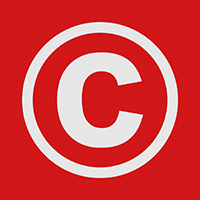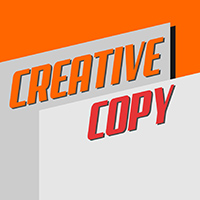Podcast: Play in new window | Download | Embed
Today’s Guest

In this episode you will learn about what to look in a copywriter, the process and how to get calculated results from your copy.
Joel Klettke is an expert in Saas and B2B copywriting.
This is the 92nd session of of Smart Brand Marketing.
MY BIGGEST TAKEAWAY:
When it comes to case studies:
“How” headlines work best
Who are you trying to appeal to?
What is the big benefit?
Call to Action <- Have it appeal to the main feature. Be specific.
Appeal to readers and scanners
[sc name=”SBM Lead Magnet 2″]
TOPICS DISCUSSED
- SaaS and B2B focus
- How to choose a client wisely?
- Choosing the right copywriter
- The process
- Wireframe
- Creative vs calculated copy
- Digging through data
- Qualitative vs Quantitative Research
- Case Study Copy Tips
- Writing as a Career
Mastering the Technical Part of Copywriting
Any experienced content creator/writer would tell you that copywriting is a highly conceptual and creative process and that would be true. After all, you can’t hope to create an engaging copy without tapping into the creative side of your brain.
However, the truth is that copywriting is both a creative and technical process. It requires you to have a strong foundation on analysis and problem solving in order to get good at it. As such, there are a few things about the basics of the technical side of copywriting that you have to learn and master as quickly as possible.
Copywriting vs. Technical Writing
It’s often considered a rookie mistake to mistake copywriting for technical writing and vice versa. After all, they seem to be the more technically demanding subfields in content creation and anyone who has zero experience in either is prone to confuse one for the other.
Don’t get the wrong idea, though. Copywriting and technical writing actually share the same goal which is to engage, inform, and satisfy the queries of reader. In fact, they even share roughly the same disciplines which involve thorough research and a strong focus on excellent writing.
However, this is where the similarities end as both fields differ greatly in one aspect: structuring.

Right from the very start, technical writers already have a clear goal as to what they want to do with the reader which is relay as much important information as the word count would allow. For copywriters, on the other hand, they have to let the person read through their work first and leave everything open to interpretation.
What you end up in between these two are pieces that are structurally different from one another. One made by technical writing can be described as strict, straight to the point, and having no room for ambiguity. The other made through copywriting is a bit more imaginative and open to interpretation while still following a defined set of writing guidelines.
The point is that the whole goal of either writing styles is to always satisfy the inquiry of the reader. If a copy doesn’t do that, then it’s not a good copy at all.
Required Skills
It goes without saying that the quality of a copy depends greatly on the person creating it. Whether you are attempting to become a copywriter yourself or are looking for a good one to hire, there are several basic skills that all copywriters must posses. They include:
- 1. Writing Skills
 First things first, a copywriter needs to write well. This means that you should have a mastery on the most basic of concepts in writing including subject-verb agreements, spelling, punctuation, and grammar.
First things first, a copywriter needs to write well. This means that you should have a mastery on the most basic of concepts in writing including subject-verb agreements, spelling, punctuation, and grammar.
What do you need these skills for? It’s simple, really: To create content that is easy to follow yet highly informative and engaging. Most people equate good writing skills with coming up with highly scholarly articles with a lot of big words or telling a story as if Aaron Sorkin was writing it. That’s not exactly true.
What you need to do is create a simple yet flowing narrative in your story that helps the reader come up with the solution to the problem on their own using the ideas you present. Adaptability is also a great skill for technical writers. Simply put, their style and vocabulary changes to match what a certain piece requires.
- 2. An Awareness on the User Experience
 There is more to copywriting than just stringing up words together to form a paragraph. A copywriter has to have an understanding as to how a reader consumes their work in the digital format.
There is more to copywriting than just stringing up words together to form a paragraph. A copywriter has to have an understanding as to how a reader consumes their work in the digital format.
Some people think that copywriters need to have mastery on the SEO process in order to be good but that is actually not necessary. Instead on focusing too much on whether or not the search engine bots can find the right keywords to rank that content in the results page, the better focus would be on helping the end user process that information in the easiest way possible.
Here’s how it works. Supposed that a certain article meets all the SEO requirements like reaching the maximum word count, has all the necessary keyword volume, metadata, backlinks, and all that but readers can’t even understand a single thing that it is trying to say. Would it reach optimum levels on user engagement? Would it attract a lot of people coming through your web pages? The answer is no.
A better piece would be something that is designed to be easy to digest, has a layout that properly compartmentalizes all the various topics of that piece, and, if possible, easy to access and consume regardless of what device the reader is using to read it.
Don’t get the wrong idea, though. SEO skills are necessary to improve your pages rankings in the results page. But, as far as copywriting is concerned, you should focus more on the human aspect to reach engagement. Any issue on SEO will most likely take care of itself at least or be easily addressed pre-launch.
- 3. Creating Eye-Catching HeadlinesThis article might be about the technical aspects of copywriting but it’s best that we cover one of the more important parts of any content out there: The headlines.It’s often said that people read the headlines first and determine whether or not the entire piece is worth reading. If you fail to catch them with your headline, you’re not going to convince them to read the rest of your work.
Writing your headline is not just requires creativity on your part but also keen tactical knowledge. What kind of words do you use to get everybody’s attention? What recent event can you use as leverage? Would aim to create a sense of urgency or generate curiosity?
You also need to balance the creative aspect of headline creation with the technical aspect which involves, you guess it right, SEO. Simply put, you have to know what kind of headlines are okay with search engines now and which ones are not.
As of the most recent algorithm update, you can no longer rely on clickbait-y headlines “Like OMG! What #8 did Will Blow Your Mind!” or something to that effect in order to funnel traffic to your content. It must be something natural, relevant to the topic, and, most importantly, not forced and desperate sounding if you want your content to rank properly in the results pages.
- 4. Authority
 In this day and age, being the Jack of All Trades is no longer going to be profitable as clients now require people to actually specialize in a certain field if they want to hire them as copywriters. Sure, there are a lot of writers that can quickly adapt to new industries and fields but it would be best if they already have an in-depth knowledge on a certain niche.
In this day and age, being the Jack of All Trades is no longer going to be profitable as clients now require people to actually specialize in a certain field if they want to hire them as copywriters. Sure, there are a lot of writers that can quickly adapt to new industries and fields but it would be best if they already have an in-depth knowledge on a certain niche.
The reason for this is that there has been a considerable shift in content marketing from focusing on volume to value. Simply put, it’s not how many articles you can crank out a week that makes you the best in the field, it’s how one article can help multiple solve multiple real-world problems that they are facing. You can’t do this if you don’t have an in-depth knowledge on a certain subject and those that do pretend that they know something can easily be outed by an increasingly discerning audience nowadays.
Creative or Calculated?
Just like with technical writing and copywriting, people often have no idea that there is a distinction between creative copy and calculated copy. There is a great distinction between the two especially in their intentions. To make it simple for you, here’s how it works.
Creative Copy Informs

These types of copy are there just to explain something to the reader, whether that be for entertainment or educational purposes. The goal for these types of copy is to present ideas and gets the reader thinking. It’s not actually about persuading the person to change their perspective but just lay out new concepts and ideas for them to consume.
Calculated Copy Sells
This type of copy are there not only to present you with a new idea but to convince you that this is going to be important to you. A calculated copy is there not to only inform you that something exists but this something has benefits that you can take advantage.

If you think that these kinds of copy take a blatantly market-y style of writing, you’d be dead wrong. Some calculated copy are so subtle that you won’t even know that you’re being sold something until you reach the end.
The goal here is to give something to the reader that lasts in their mind for a while and, eventually, cause them to embrace the option of trying out something new. Of course, a reader has to be also told what to do which is why a lot of calculated copies have a call to action.
Why does this Matter?

Why learn the distinction in the first place? The reason is that there are instances that call for the creation of one type of copy or the other. For example, a client may require you to produce content that merely educates or entertains. In some, you’d be required to adopt a more persuasive and benefits-focused style of writing.
Of course, these types of content require a different set of skills to create properly. You may even choose to specialize on or the other or, better yet, both. It’s up to you, really.
However, this brings us back to one of the core skills that any copywriter must have as far as their writing is concerned: adaptability. The best copywriters out there can change the style and tone of their work to meet the needs of both creative and calculated copywriting. The challenge here is to identify which skills you will need to perform and what content you need to produce to achieve the objective set by a client.
The Call to Action and How to Make a Good One
Informing and convincing a person of a new idea is just part of the process. Now you’d have to convince them to do something for you. A Call to Action is where you’d do just that and the best ones often possess three qualities which are.
- Action Orientedness: As with every part of your copy, the terminology that you use for your CTAs will matter. Since they are, well, calls to action, you’d rather choose direct and action-driven words to get your point across. Phrases like “subscribe”, “purchase”, “download”, “read more” and “head on to” evoke an image of command while reminding the reader of the benefits for choosing to act will make them feel smarter for doing so.
- Shortness: The telltale sign that a writer is overcompensating is if they get too wordy with their pieces. Keep your calls to action within 3 to 5 short sentences, telling the reader what to do, where to go, and what to purchase within each line. The longer your CTA, the least likely you are going to get that reader’s attention.
- Urgency: It’s not enough that you tell people to do something, they must do something NOW. Words like “now”, “today”, and “immediately” all connote a sense of urgency which tells a person to do this ASAP or they won’t be receiving the benefits promised.
All of these qualities help a CTA do what it was designed for: keep the reader engaged. The more a person feels invested in doing something for both you and their behalf, the more likely they are going to do whatever action they are calling them to do.
In Conclusion
Regardless of how everything might sound, mastering the technical aspects of copywriting is not exactly as difficult as you might think. All it takes is for you to constantly update yourself with what works as far as SEO is concerned and then balancing this with the basics of content writing. Do it right and you might just create copies that inform, entertain, and persuade while also ranking well in the search engine results pages.
What other skills do you think a copywriter should have? What do you think makes for a good copy? The comments section down below is open for all sorts of discussion.
References:
https://www.quora.com/Is-copywriting-a-technical-or-creative-skill
https://www.bkv.com/blog/content-vs-copy-the-difference-and-why-it-matters/
https://experience.stratusinteractive.com/blog/3-must-have-characteristics-of-call-to-action-phrases
RESOURCES
JOEL IN ACTION
THANK YOU FOR LISTENING!
To get more SBM content sent directly to your device as they become available, you can subscribe on iTunes or Stitcher!
Also, reviews on iTunes are extremely helpful and greatly appreciated! I read each and every one of them, and feel free to share your URL there so I can contact you later on and say thanks!
[sc name=”SBM Lead Magnet 1″]


